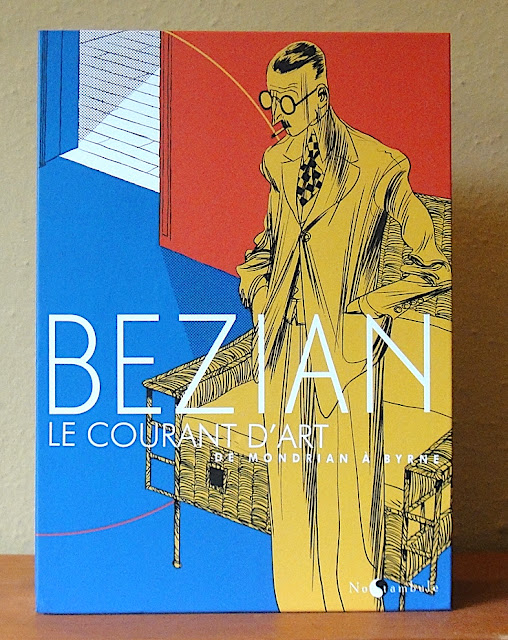A really sharply designed comics leporello with beautifully drawn illustrations by Bézian set within an engaging design and layout. The work is comprised of two separate stories about Piet Mondrian (1872-1944) and Oliver Byrne (1810-1880) which you can enter from either side of the publication. Of the book's theme one commentator remarked:
"Nearly a century before Mondrian made geometrical red, yellow, and blue lines famous, 19th-century mathematician Oliver Byrne employed the color scheme for his 1847 edition of Euclid's mathematical and geometric treatise Elements. Byrne's idea was to use color to make learning easier and "diffuse permanent knowledge." The result has been described as one of the oddest and most beautiful books of the 19th century."
Naturally there is a lot to say about how Mondrian got to be using such a spare palette, as well as his friendship with Walter Gropius and his involvement with the Bauhaus. Both men are presented as vulnerable human beings with tangled romantic lives as well!
28 double-sided pages, individually 11.5" x 7.5" and when unfolded 17' 6".















